Research groups
Wearable Technolgies
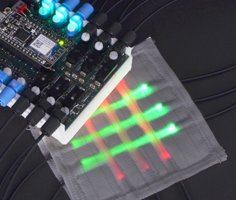
The WT group engineers smart werable technologies and human simulators to validate and drive materials and models dvelopment. This includes intergration of innovative sensors and electronics into textiles and also the improvement of textile systems with research on highly sophisticated manikins.
Integration of sensors and actuators into textile structures is done by traditional textile manufacturing processes but also using new technologies such as laser welding and 3D-printing. The use of electrical and optical fiber based sensing elements allows unobtrusive, continuous monitoring of vital signs.
In addition analytical tools such as microcomputer tomography and computer simulations are used to understand interactions of textiles with the human body. Instrumented manikins coupled with a thermo-physiological model allow characterization and further development of textile systems and physiological interpretation of the results.
Materials-Body Interaction
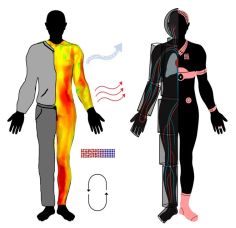
The aim of the body monitoring group is to develop solutions for the accurate and continuous monitoring of physiological parameters by applying flexible sensors developed in our lab and integrated into textiles. In addition, empirical models are developed based on statistical and machine learning approaches using multiple pysiological parameters as input to assess health status for clinical and heat strain for occupational applications.
Thermal interactions of the human body with its environment and its effect on thermal comfort perceptions and heat stress are predicted based on mathermatical models for thermo-physiological resonses extended by advanced clothing models for an accurate simulation of thermal phenomena in clothing microclimate. These models are validated based on human subject data provide essential inputs for fabric and clothing developments as well as new concepts for body monitoring approaches.
Simulating Biological Systems
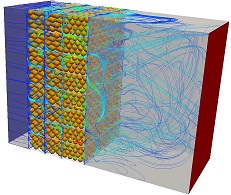
In this group we do physics-based simulations and sensing of transport pocesses in plant-based food systems and the human body. We do this to reduce food loss and postharvest supply chains, individualize drug delivery systems, and design sustainable drying processes by understanding and steering theses systems in-silico. We achieve these goals by pioneering mechanistic modeling at multible scales.
In addition, we bridge the virtual to the real world by multi-parameter sensing. We also create digital twins that can live together with their real-world counterpart. We are an interdiscipinary team of mechanical, biomedical and agricultural engineers, food schientist and environmental scientist.
Optofluidics
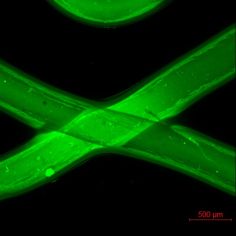
This group develops intergrated microfluidic systems for the passive collection of fluids in a non-invasive fashion combined with highly performing optical sensors for the monitoring of relevant bio-markers in clinical and sport settings. The key feature is the utilization of fast prototyping techniques, such as 3D printing, for the customization of the device performance according to the application.
Our expertise includes the sythesis and development of optical transducers, conjugation to suitable receptors, control of the optical probe dispersion within soft and bio-inert materials by controlling the reactivity at the probe/matrix interface and characterization of the sensing performance.
In parallel, we investigate the assembling of non-covalent abd covalent interaction in the formation of hydrogel fibers and three dimensional constructs via microfluidic wet spinning and 3D printing to obtain novel bio-safe materials for tissue engineering.
Adaptive Textiles & Hydrogels
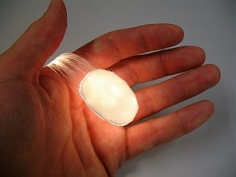
This group focuses on the synthesis of adaptive, hybrid materials by intercorporating functional moieties and nanoparticles into polymers. Special focus of the group are materials and substances able to interact with light, such as optical fibers, fluorophores or photochromes.
We steer the optical and mechanical properties of our materials by combining nanoparticles (specially aluminosilicates) with the active substances. The target of the group is to develop hybrid materials for application in stimuli controlled drug delivery or chemical- and biosensors.
Biophysical Skin Modelling
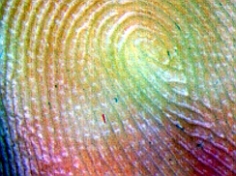
Our group studies the interactions between human skin and materials and develops novel mechanical skin models, in-vitro skin models as well as theoretical models in order to realistically simulate skin.
The different models are used for material development and serve as basis for the detailed characterisation of materials and surfaces on the macro- and microscopic scale. Typical projects are related to the development of new, bio-inspired materials which combine skin-friendly surfaces with special functionalities, e.g. for applications in sports and medicine.
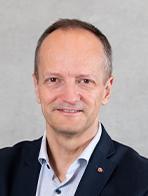
Prof. Dr. René Rossi
Co-Head of Departement 'Materials meet Life'
Head of Laboratory 'Biomimetic Membranes and Textiles'
Phone: +41 58 765 7765



